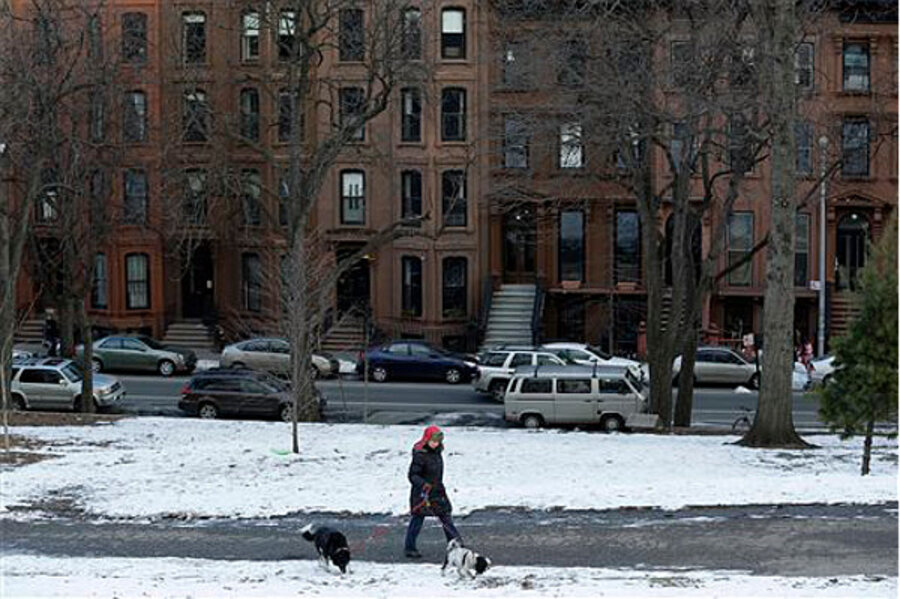Gentrification: Why Spike Lee was ranting about New York
Loading...
| NEW YORK
In a rant that quickly went viral, film director Spike Lee disparaged the gentrification of historically black New York City neighborhoods and reignited an age-old debate over the merits of economic change.
Lee, who grew up in the Brooklyn neighborhood of Fort Greene, made the comments during a Black History Month speech at the Pratt Institute in that borough Tuesday. No stranger to making incendiary remarks about race and society, Lee said gentrification had little regard for people who "have a culture that's been laid down for generations."
"So, why did it take this great influx of white people to get the schools better? Why's there more police protection in BedStuy and Harlem now?" he demanded, using local shorthand for Brooklyn's Bedford-Stuyvesant neighborhood. "Why's the garbage getting picked up more regularly? We've been here!"
Lee, who moved out of Brooklyn years ago, recently listed his Upper East Side townhouse for $32 million.
The rant, which quickly went viral, didn't really bother Catherine Kunicki, 60, a longtime resident of Fort Greene who used to live down the block from Lee's family. She recalled seeing the director standing in a local delicatessen where she would get coffee when he was researching his classic film "Do the Right Thing," which takes place in Brooklyn.
"He's right," she said. "He's just angry."
Kunicki moved to the neighborhood in 1971 when she enrolled in the Pratt Institute. Back then, packs of feral dogs would roam the streets at night, and the grass grew through the sidewalks up to her knees during the summertime.
On the street where the Brooklyn Academy of Music now sits, drunks and drug addicts used to throw pans at people when they walked past, she said. The charming, brownstone-lined neighborhood is both safer and wealthier now, which has its drawbacks and its advantages.
"Unfortunately, the only people who can afford to buy a house and live here and raise a family are Wall Street people with huge bonuses who can come in and pay cash," Kunicki said. "And I have to admit, my neighbors are arrogant. They're not awful; they just believe they're entitled."
Others were upset by Lee's comments. Robert Perris, district manager for Fort Greene's local community board, refused to discuss Lee's remarks, which he described as "hate language."
"It sounded pretty hostile to me. When your sprinkle your conversation with that many expletives, this is not a critical discourse," Perris said. "This is spewing hate."
For Kath Hansen, 49, who founded the Fort Greene Park Users and Pets Society, gentrification has its upsides.Lee was particularly critical of the proliferation of dogs in the popular park, which sits at the heart of the neighborhood, and mockingly compared it to the Westminster Dog Show.
But the dog owners help keep the park safe and clean, Hansen pointed out.
"There's less crazy people wandering around the park at 6:30 in the morning," said Hansen, who has lived in the area since 1998. "It used to be the junkies and the people who slept in the park overnight. And I don't see that anymore. Is that a bad thing? OK, it's less colorful, I'll say that. But it's possibly more safe."
Ironically, Lee's sister, Joie Lee, was a member of the pets society before she moved to another part of Brooklyn, Hansen said.
And for longtime residents like Kunicki, the forces of gentrification have been a financial boost, too. The brownstone that she purchased for $75,000 in 1982 is now worth about $2 million. But Kunicki and her family don't plan to cash out and leave because they love living there too much.
"It was a nice quiet sleepy neighborhood. It's not a sleepy neighborhood any longer," she admitted. "I live in New York City. What are you going to do?"
Copyright 2014 The Associated Press. All rights reserved. This material may not be published, broadcast, rewritten or redistributed.







